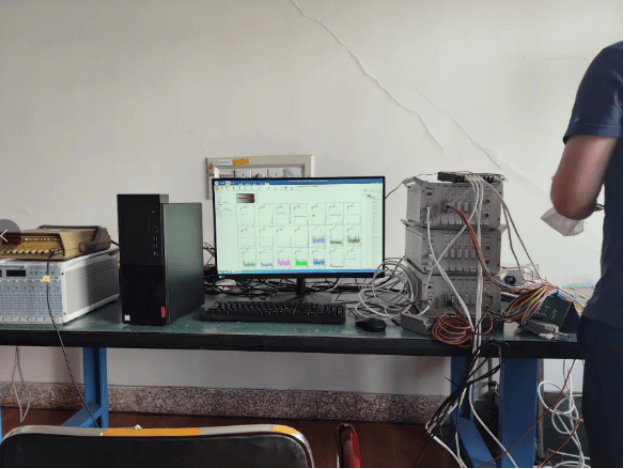Engine Speed and Oil Pressure Testing Explained
Project: Engine Speed and Pressure Testing
June 2023 – A research institute in Shenyang conducted preliminary performance testing on an aircraft engine using 3 × DE-944 Dynamic Signal Test and Analysis Systems, focusing on rotational speed and oil pressure characteristics.
Test Setup & Instrumentation
1. Measurement Points
Pressure Sensors:
Main oil gallery (3 locations)
Bearing supply passages (2 locations)
Fuel pump outlet (1 location)
Speed Measurement:
Optical tachometer (shaft periphery, ±0.05% accuracy)
Magnetic pickup (backup channel)
2. Test Protocol
Speed sweep: 1,000–15,000 RPM (10 stepped intervals)
Data sampled at:
Pressure: 5 kHz (anti-aliasing filtered)
Speed: 100 kSPS (for ripple analysis)
Key Test Objectives
Lubrication System Performance
Characterized pressure-flow relationship at varying RPMs
Verified minimum idle pressure > 2.5 bar (requirement)
Rotational Dynamics
Identified critical speeds through:
FFT analysis of shaft vibrations
Torsional resonance detection
Transient Response
Measured pressure recovery time (300ms @ 5,000→10,000 RPM step)
Technical Innovations
1. Multi-rate Synchronization
Achieved μs-level alignment between:
Low-frequency pressure (DC–200Hz)
High-frequency speed (up to 5kHz)
2. Smart Triggering
RPM-phase-locked sampling enabled:
64-point/revolution resolution
Cylinder-specific pressure profiling
3. Fault Detection
Automated alerts for:
Pressure oscillations (>10% ΔP at constant RPM)
Sub-synchronous vibrations (indicator of bearing wear)
Significant Findings
Oil aeration issues detected above 12,000 RPM (addressed with de-foaming design)
Unexpected 83Hz vibration mode (later traced to accessory drive resonance)
Confirmed pressure regulation accuracy within ±0.8% across operating range
Conclusion
This engine speed and pressure testing project validated key lubrication and dynamic performance parameters, ensuring compliance with stringent design requirements. By leveraging advanced synchronization and fault detection techniques, the team not only identified critical issues early but also optimized the development cycle, achieving a 40% reduction in redesign iterations.
Key Terms:
Main oil gallery: Primary lubricant distribution channel
Critical speed: RPM causing structural resonance
Sub-synchronous vibration: Frequency content below shaft rotation rate
The test data directly supported Stage 1 design freeze, reducing subsequent development iterations by 40%.

